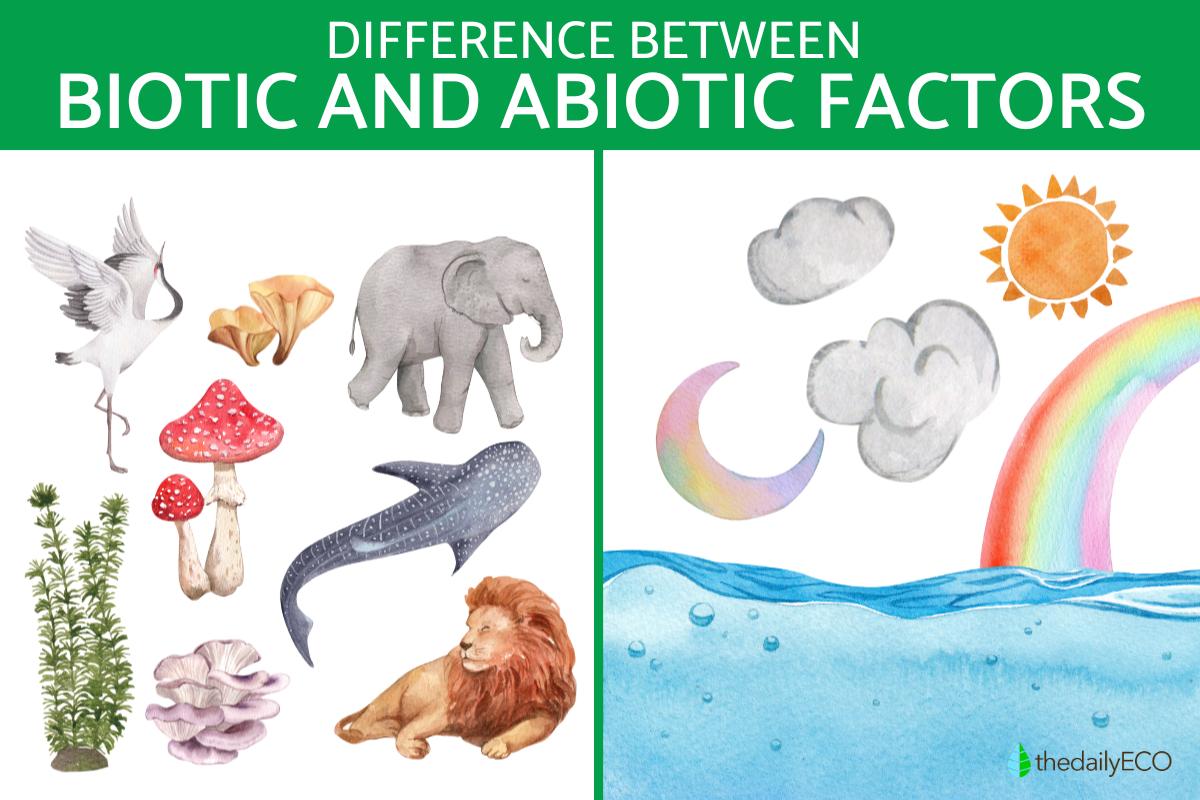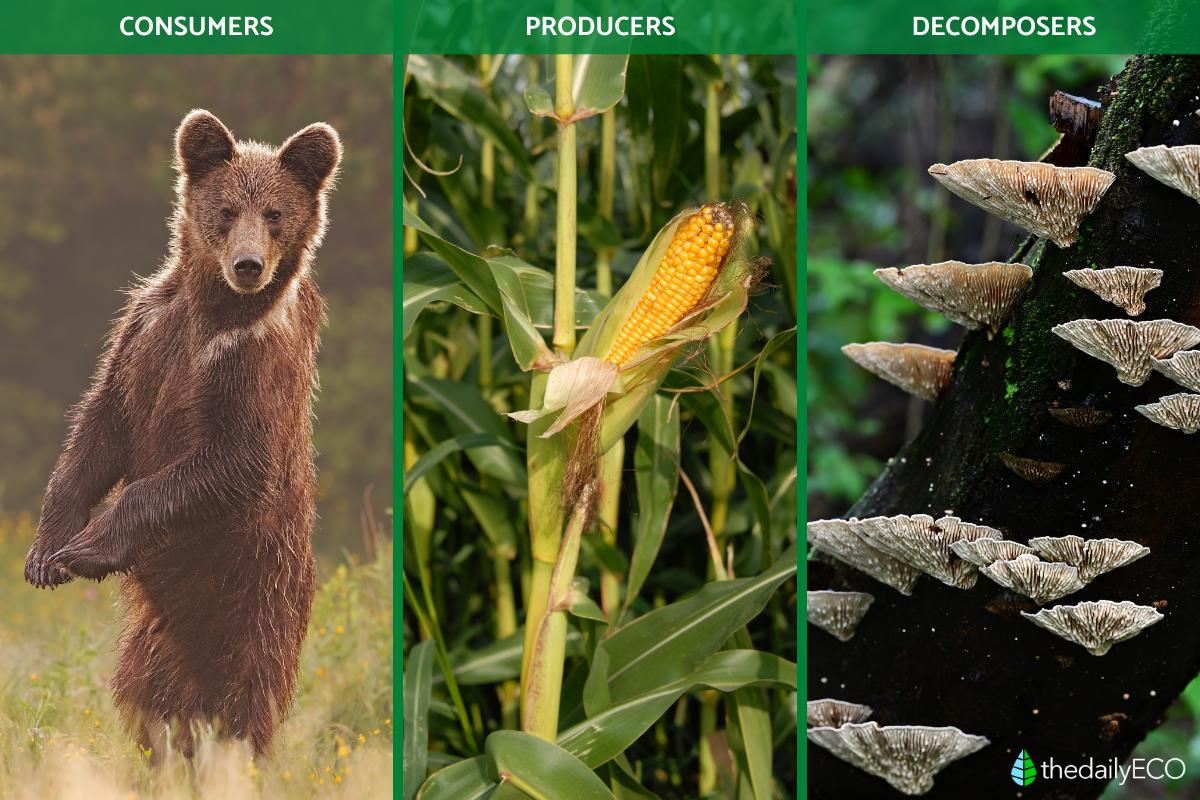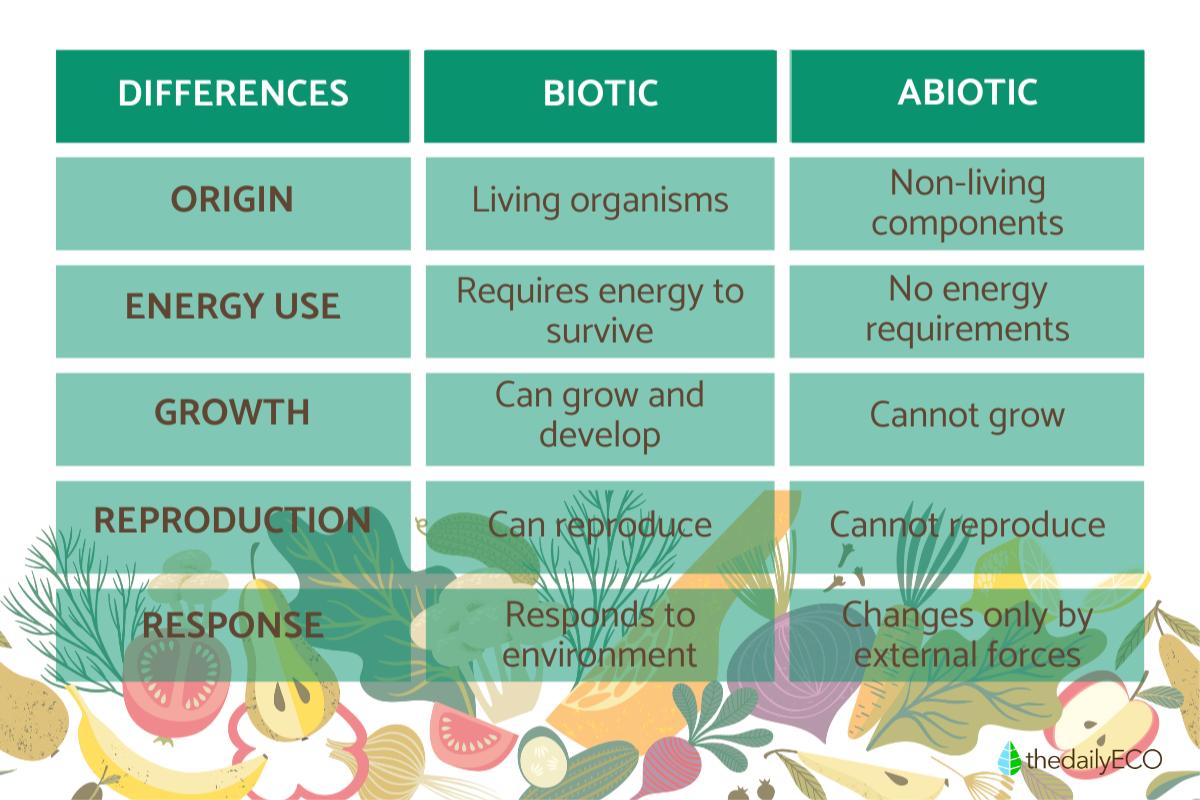What Is the Difference Between Biotic and Abiotic Factors?

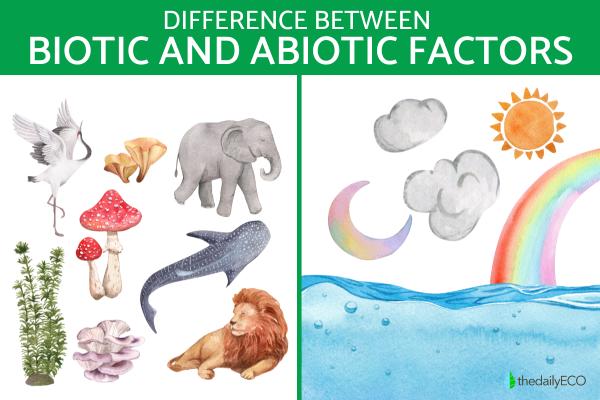
What makes ecosystems thrive and function? Understanding the difference between biotic and abiotic factors is essential for grasping how ecosystems function. Biotic factors encompass all living organisms and their interactions, while abiotic factors comprise the non-living physical and chemical components of the environment. Together, these factors create the balance that supports life on Earth.
In this article by thedailyECO, we’ll dive into what biotic and abiotic factors are and how they differ.
What are biotic factors?
Biotic factors are all living organisms within an ecosystem and their direct products, such as honey, nectar, or leaf litter. These organisms interact with each other and their environment in complex ways that shape ecosystem dynamics.
Living organisms share fundamental characteristics: they are composed of at least one cell, maintain homeostasis, undergo metabolism, respond to stimuli, grow and develop, reproduce, and evolve over generations.
Modern science classifies these organisms into three broad domains, reflecting their evolutionary relationships and cellular structure. These are:
Producers (Autotrophs):
Producers, also known as autotrophs, can create their own food from inorganic materials. While plants are the most familiar producers, using sunlight through photosynthesis to convert carbon dioxide and water into glucose and oxygen, they aren't the only ones. Some bacteria can produce their own food using chemical energy rather than sunlight, a process known as chemosynthesis. These chemoautotrophic bacteria are particularly important in deep-sea ecosystems where sunlight cannot reach.
These self-sustaining organisms form the foundation of most food webs, both on land and in water. Without producers, the complex web of life as we know it couldn't exist, as they are the entry point for energy and nutrients into ecosystems, supporting all other forms of life above them in the food web.
Consumers (Heterotrophs):
Consumers, also known as heterotrophs, are organisms that must obtain their energy and nutrients by consuming other organisms. These include herbivores that feed exclusively on plants, such as deer and rabbits, and also carnivores that consume other animals, like wolves and eagles. It also includes omnivores that eat both plants and animals, such as bears and humans. Parasites represent another type of consumer, living on or within host organisms and deriving nutrients at their expense.
Together, these consumers create intricate food webs with multiple feeding levels, or trophic levels, where energy flows from one organism to another.
Decomposers:
Decomposers are responsible for breaking down dead organic matter into simpler compounds. Fungi and bacteria are the primary decomposers, often working together in complex symbiotic relationships to break down everything from fallen leaves to dead animals.
Through this decomposition process, they release essential nutrients back into the environment, making them available for producers to use once again. This nutrient recycling is crucial for ecosystem health, completing the cycle of matter in nature.
Want to dive deeper into living components of ecosystems? Our detailed article explores how organisms shape their environment.
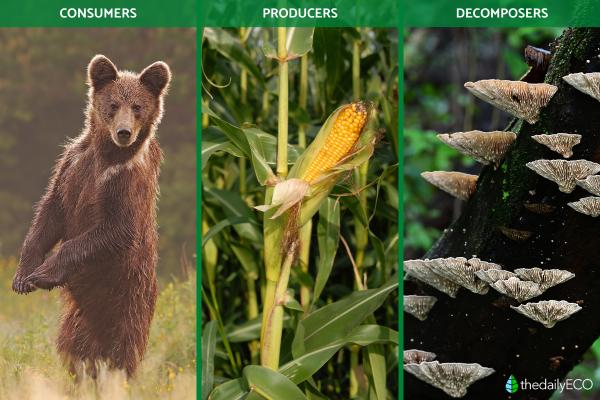
What are abiotic factors?
Abiotic factors are the non-living, physical, and chemical components of an ecosystem that influence living organisms and ecosystem functioning. While they don't carry out life processes, these factors are essential for life, creating and maintaining the conditions that make ecosystems possible.
Abiotic factors encompass a wide range of physical elements, from climate components like temperature, humidity, and precipitation, to fundamental resources like light, air, and water. The physical environment includes soil characteristics, topography, and geological features, while chemical factors include critical measures like pH levels, nutrient availability, and mineral concentrations in both soil and water.
These factors can be categorized by their origin into natural and anthropogenic component:
- Natural abiotic factors arise from Earth's processes and include elements like sunlight, air, water, soil, rocks, and minerals. These create the fundamental conditions for life and undergo natural cycles and variations.
- In contrast, anthropogenic factors result from human activities, including manufactured materials and environmental modifications that can significantly alter ecosystem conditions at both local and global scales.
The interaction between abiotic factors creates complex environmental conditions. For instance, temperature and humidity work together to affect water availability for organisms, while soil pH determines which nutrients plants can access. Light and temperature interact to influence photosynthesis rates, and topography shapes local climate conditions. These interactions create unique microenvironments that support different forms of life.
There's also a constant exchange between biotic and abiotic components in any ecosystem. Organisms modify their abiotic environment, such as when plants alter soil chemistry or when dead organic matter becomes incorporated into soil through decomposition. Not only that, but weather patterns can be influenced by vegetation cover, and even geological processes may be affected by biological activity over time.
This complex web of abiotic factors creates the environmental framework within which life exists and evolves. While they may be non-living, abiotic factors form dynamic systems that interact with and support all living things.
Ready to explore how most living things obtain their nutrients? Our guide reveals the secrets of nature's consumers.

Differences between biotic and abiotic factors
Understanding the differences between biotic and abiotic factors is crucial for understating ecosystem dynamics. These key distinctions help explain how living organisms interact with their non-living environment and reveal the complex relationships that maintain life on Earth. Let us take a closer look at their differences:
Nature and basic composition:
- Biotic: living organisms and their direct products or byproducts (like honey, pollen, or secretions).
- Abiotic: mon-living physical and chemical components that make up the environment, including both natural and artificial elements.
Energy and metabolism:
- Biotic: require constant energy input through metabolism, using processes like photosynthesis or digestion to maintain life.
- Abiotic: do not require energy to maintain their existence, though they can store and transfer energy in various forms.
Growth and development:
- Biotic: experience distinct stages of development, can repair themselves, and undergo metabolic processes to increase in size.
- Abiotic: do not grow organically, though they can accumulate or erode through physical and chemical processes.
Reproduction:
- Biotic: can reproduce either sexually or asexually to create new organisms and pass on genetic information.
- Abiotic: cannot reproduce themselves, though they can be transformed or recreated through physical and chemical processes.
Response to environmental changes:
- Biotic: show immediate or gradual responses to environmental stimuli through various mechanisms like movement or physiological changes.
- Abiotic: only change through external physical or chemical forces, following natural laws rather than biological responses.
Structure and organization:
- Biotic: composed of cells with complex internal organization and specific functions.
- Abiotic: made of molecules and atoms arranged in regular patterns or random distributions without cellular organization.
Life cycle and transformation:
- Biotic: follow a predictable life cycle from birth through growth to death, eventually decomposing back into abiotic components.
- Abiotic: exist in various states and can transform through physical or chemical processes without truly "dying".
Adaptation and evolution
- Biotic: can adapt to environmental changes over generations through natural selection and evolution.
- Abiotic: cannot adapt independently, though they can be altered by both natural processes and human intervention.
Interaction with environment
- Biotic: actively interact with and modify their environment through processes like photosynthesis, respiration, and waste production.
- Abiotic: passively influence the environment through their physical and chemical properties.
Complexity and organization
- Biotic: show various levels of organizational complexity from single cells to complex organ systems.
- Abiotic: range from simple elements to complex compounds but lack biological organization.
Chemical composition
- Biotic: primarily composed of organic compounds based on carbon chains and containing specific biological molecules.
- Abiotic: can be either organic or inorganic, without the specific organization found in living things.
Time scale of changes
- Biotic: experience changes on both short (individual lifetime) and long (evolutionary) time scales.
- Abiotic: change according to geological, chemical, and physical processes, often on much longer time scales.
Did you know ecosystems follow a pyramid structure? Discover how energy and biomass flow through nature's levels.

If you want to read similar articles to What Is the Difference Between Biotic and Abiotic Factors?, we recommend you visit our Environment (other) category.





